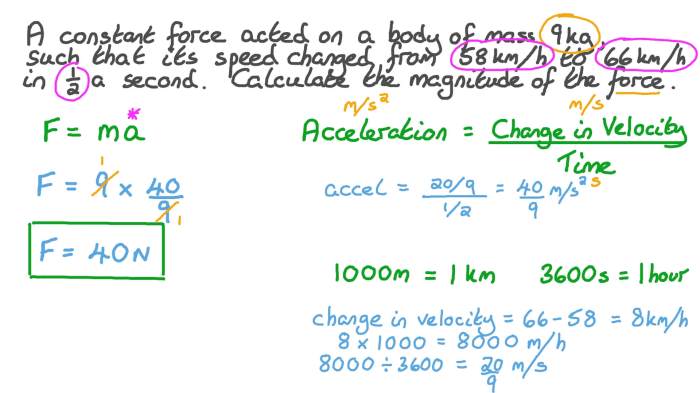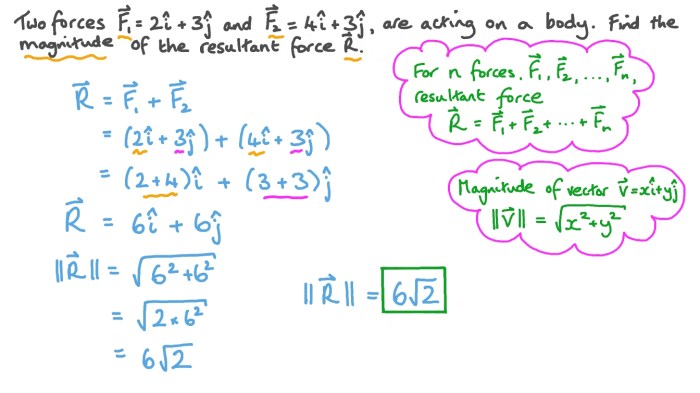The magnitude of a force is everfi, a fundamental concept in physics that plays a crucial role in shaping our understanding of the physical world. This guide delves into the intricacies of force magnitude, exploring its definition, factors influencing it, and its wide-ranging applications.
Force, a vector quantity, is characterized by both magnitude and direction. Magnitude, a scalar quantity, represents the strength or intensity of the force. Understanding force magnitude is essential for predicting the behavior of objects under the influence of external forces.
Magnitude of Force

Magnitude of force refers to the strength or intensity of a force. It is a scalar quantity, meaning it has only magnitude and no direction. The magnitude of a force is expressed in newtons (N), which is the SI unit of force.
Forces with varying magnitudes can be encountered in everyday life. For instance, the force applied to open a door is typically smaller than the force required to lift a heavy object. Similarly, the force exerted by a car engine to accelerate is greater than the force applied by a person pushing a shopping cart.
The magnitude of a force can be measured using various instruments, such as spring scales or force sensors. These devices convert the force into a measurable displacement or electrical signal, which can then be calibrated to determine the magnitude of the force.
Factors Affecting Magnitude, The magnitude of a force is everfi
The magnitude of a force is influenced by several factors, including:
- Mass:The mass of an object affects the magnitude of the force required to move it. Greater mass requires a greater force to accelerate or decelerate.
- Acceleration:The acceleration produced by a force is directly proportional to the magnitude of the force. A larger force results in a greater acceleration.
- Surface conditions:Friction and other surface conditions can affect the magnitude of the force required to move an object. For instance, a force applied to move an object on a rough surface will be greater than the force required to move the same object on a smooth surface.
The magnitude of a force can be calculated using mathematical formulas, such as Newton’s second law of motion (F = ma), where F is the force, m is the mass, and a is the acceleration.
Effects of Magnitude
Varying magnitudes of force can have different effects on objects:
- Motion:A greater force applied to an object will result in a greater change in motion, either in terms of speed or direction.
- Deformation:Forces can cause objects to deform or change shape. The magnitude of the force determines the extent of deformation.
- Damage:Excessive force can cause objects to break or become damaged. The magnitude of the force determines the severity of the damage.
Understanding the magnitude of a force allows us to predict the behavior of objects and design systems that can withstand or utilize forces effectively.
Applications of Magnitude
The magnitude of force has numerous practical applications in various fields:
- Engineering:Engineers use the magnitude of force to design structures, machines, and systems that can withstand or exert specific forces.
- Physics:Physicists study the magnitude of forces to understand the interactions between objects and the laws governing motion.
- Sports:Athletes optimize their performance by understanding the magnitude of forces involved in their movements.
By understanding the magnitude of a force, we can harness its effects to achieve desired outcomes in various applications.
Top FAQs: The Magnitude Of A Force Is Everfi
What is the SI unit of force magnitude?
The SI unit of force magnitude is the newton (N), named after Sir Isaac Newton.
How can I measure the magnitude of a force?
Force magnitude can be measured using various instruments, such as spring scales, force gauges, and dynamometers.
What factors influence the magnitude of a force?
Factors influencing force magnitude include the mass of the objects involved, the acceleration produced, and the angle between the force and the displacement.

